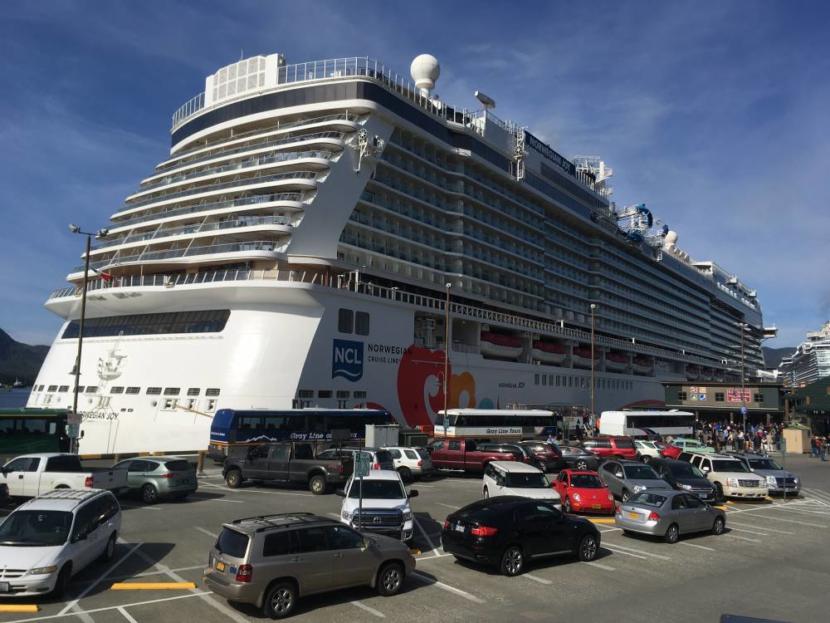
Southeast Alaska is hosting increasingly bigger ships. But the region’s fleet of tugs remains the same size. So what happens if a megaship loses power? The Coast Guard recently met with the cruise industry looking for answers.
Well, what happens if a car breaks down on the highway? You call a tow truck.
On the water, it’s similar.
“If a ship breaks down, you need a tugboat,” said Ed Page, former Coast Guard officer and executive director of the Marine Exchange of Alaska, which operates real-time vessel tracking in Alaska waters.
Some of these newer cruise ships are the size of an office building, says marine pilot John Herring.
“Two years ago, the size of vessels coming to Southeast jumped dramatically with the Norwegian Bliss. And then this last year, the Norwegian Joy was added, and the Ovation of the Seas and the Royal Princess,” he said.
Alaska requires licensed pilots like him to guide foreign-flagged ships in state waters.
But Herring says these megaships generally don’t need any help getting into and out of port.
“These big ships are very maneuverable,” he said. “They’re built to not require tugs to get to the dock and away from the dock.”
In fact, if they did need tugs, they’d have to look elsewhere. In 2019, Herring’s organization, Southeast Alaska Pilots’ Association published a study recommending larger tractor tugs capable of pulling megaships. And the pilots say there aren’t any of those in Southeast Alaska.
Cruise ship industry representatives met with the Coast Guard, marine pilots and regional port directors in Ketchikan in January. The meeting was closed to the public, but the Coast Guard says there was consensus in the room.
“I think everybody agrees, whoever you talk to, whether it be the cities or the tug operators or, or the pilots or the cruise ships, that bigger tugs would be better,” said Captain Steve White on the sidelines of the meeting. He leads the Coast Guard’s Sector Juneau.
He says having the larger tractor tugs aren’t crucial, but “it would be an additional safety measure that made things better.”
Herring — who’s currently president of the Southeast pilots’ association — agrees.
“You know, I guess I would think about this as an insurance policy more than anything,” he said.
But who would pay for them? That question remained unanswered after the meeting.
“There’s no there’s been no financial incentive for anyone to provide tugs of bigger size in Southeast Alaska,” Herring said.
A representative of Amak Towing — that’s a Ketchikan-based tug service — referred questions back to the Coast Guard.
But the Coast Guard isn’t requiring the larger tugs. Nor is the industry volunteering to pay.
“I think it probably is going to require some public investment to get there,” Herring said.
In the meantime, marine pilots say that in the event of an emergency they’ll do what they’re trained to do when losing power in rough seas. They’ll drop anchor and call the Coast Guard.
